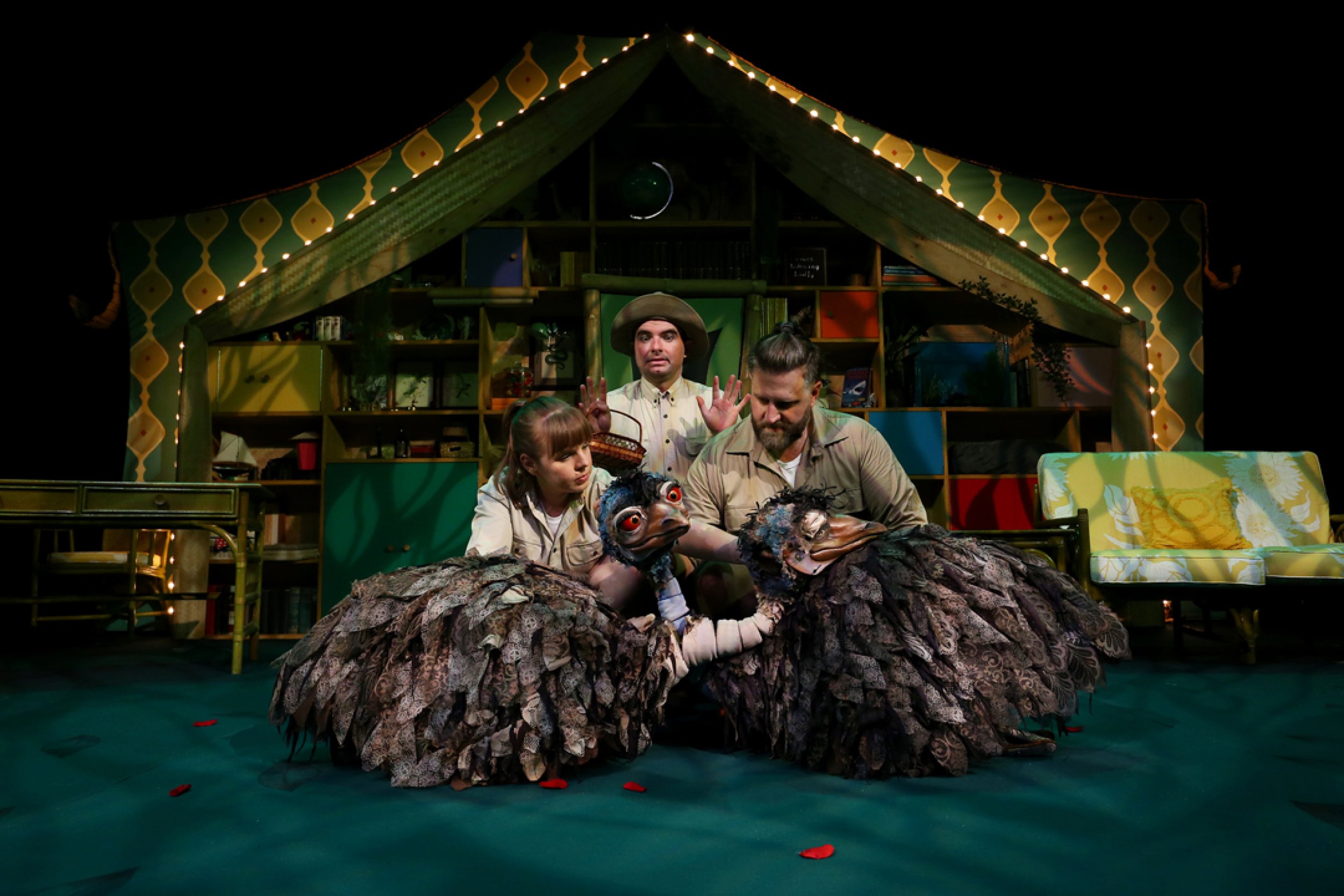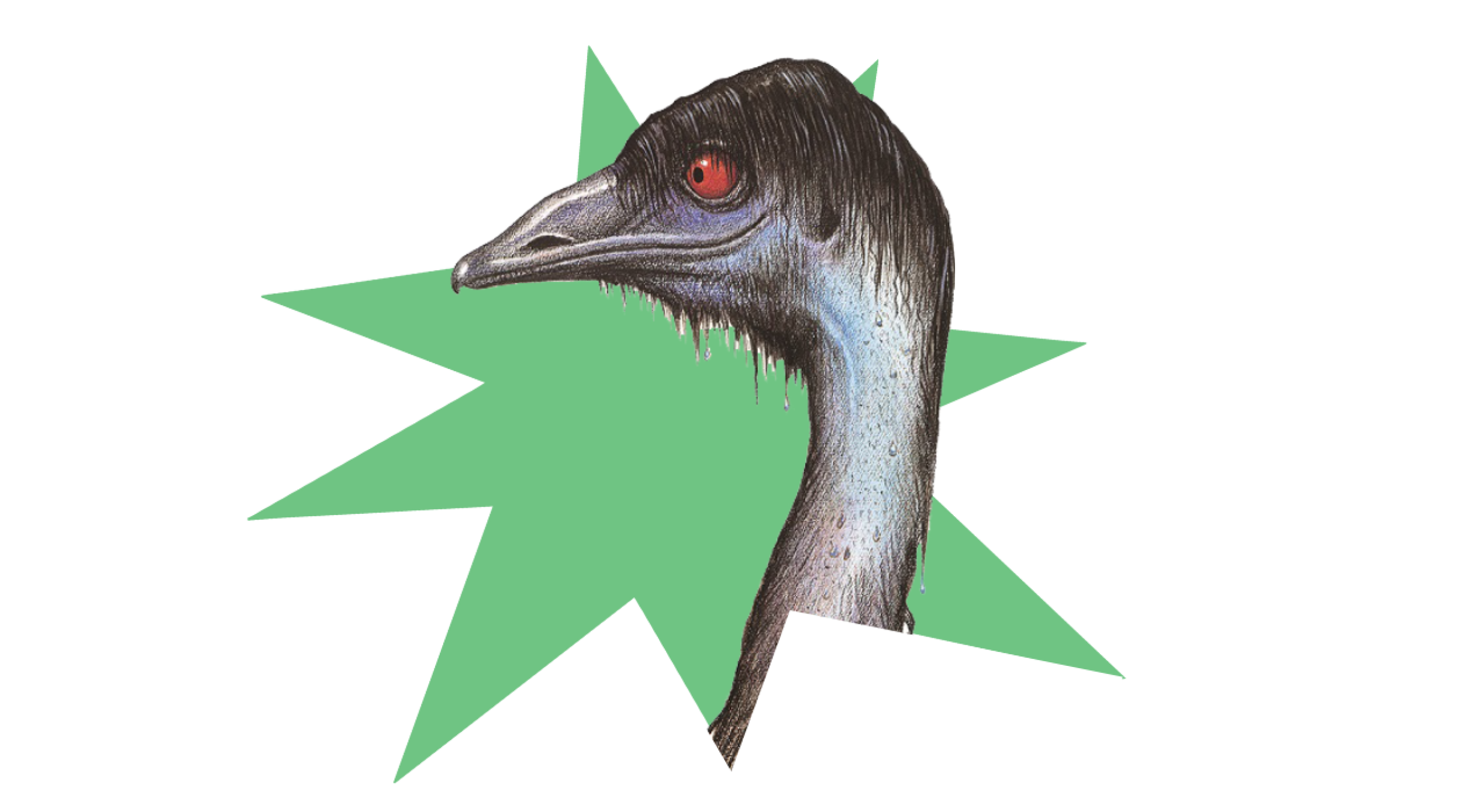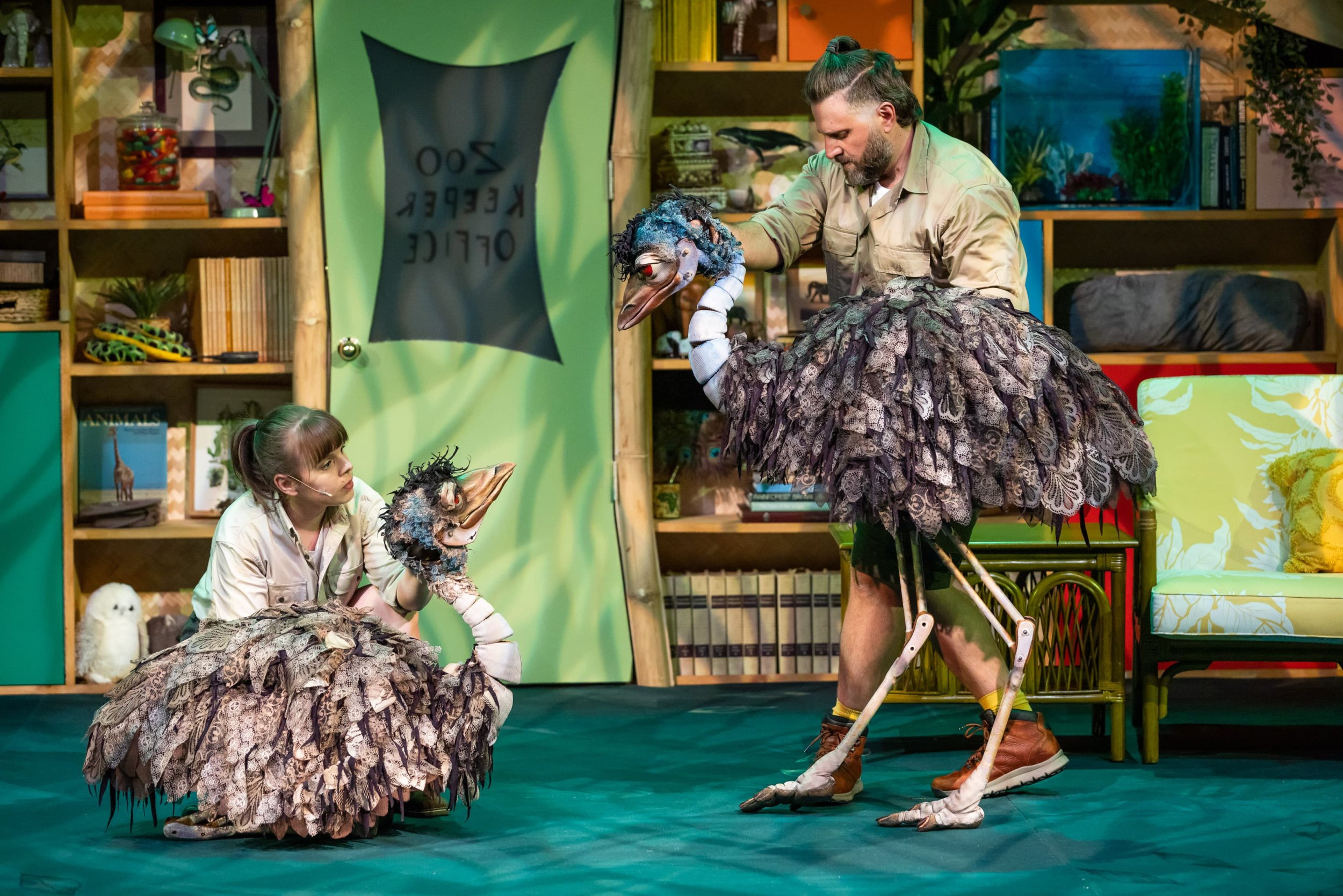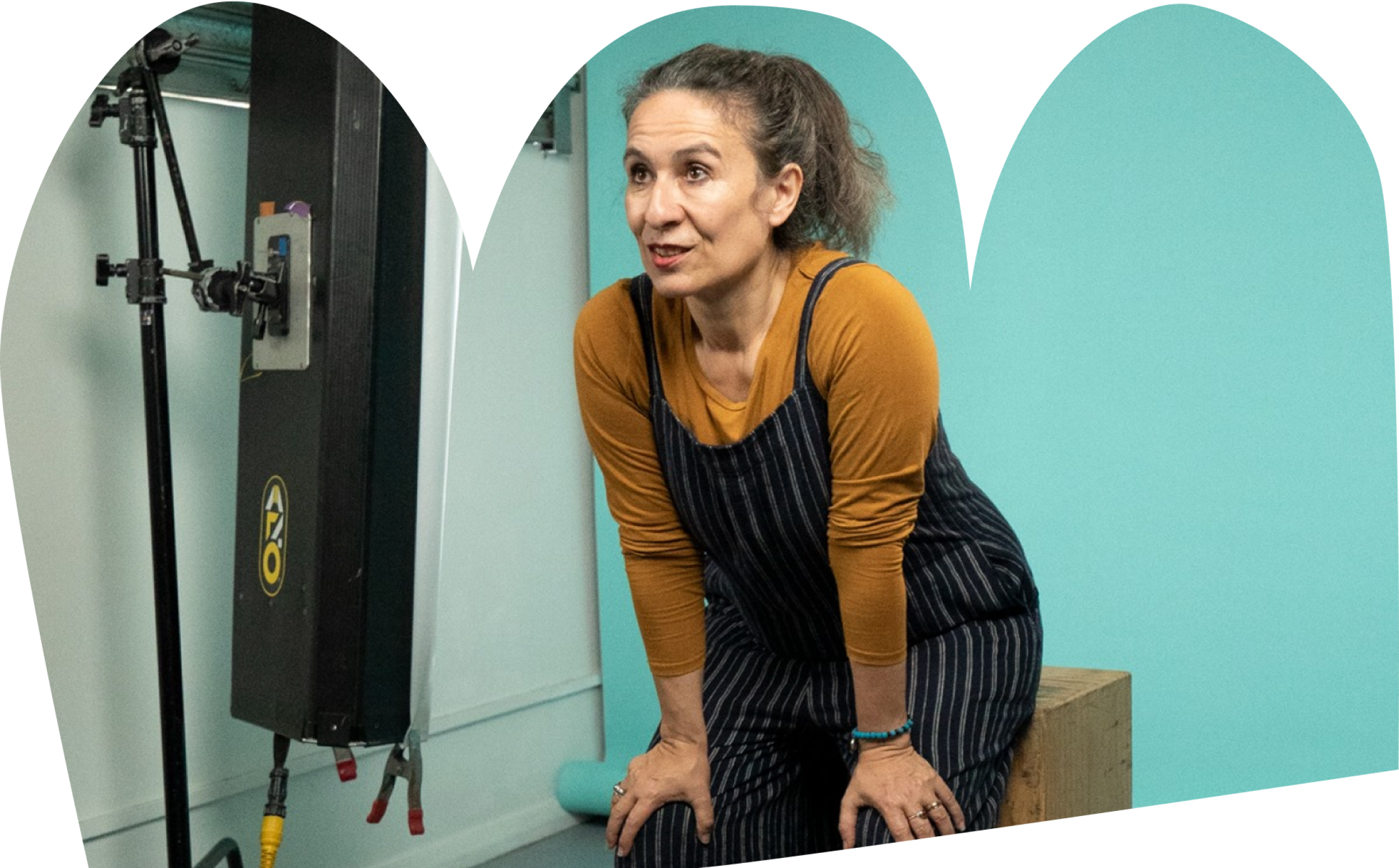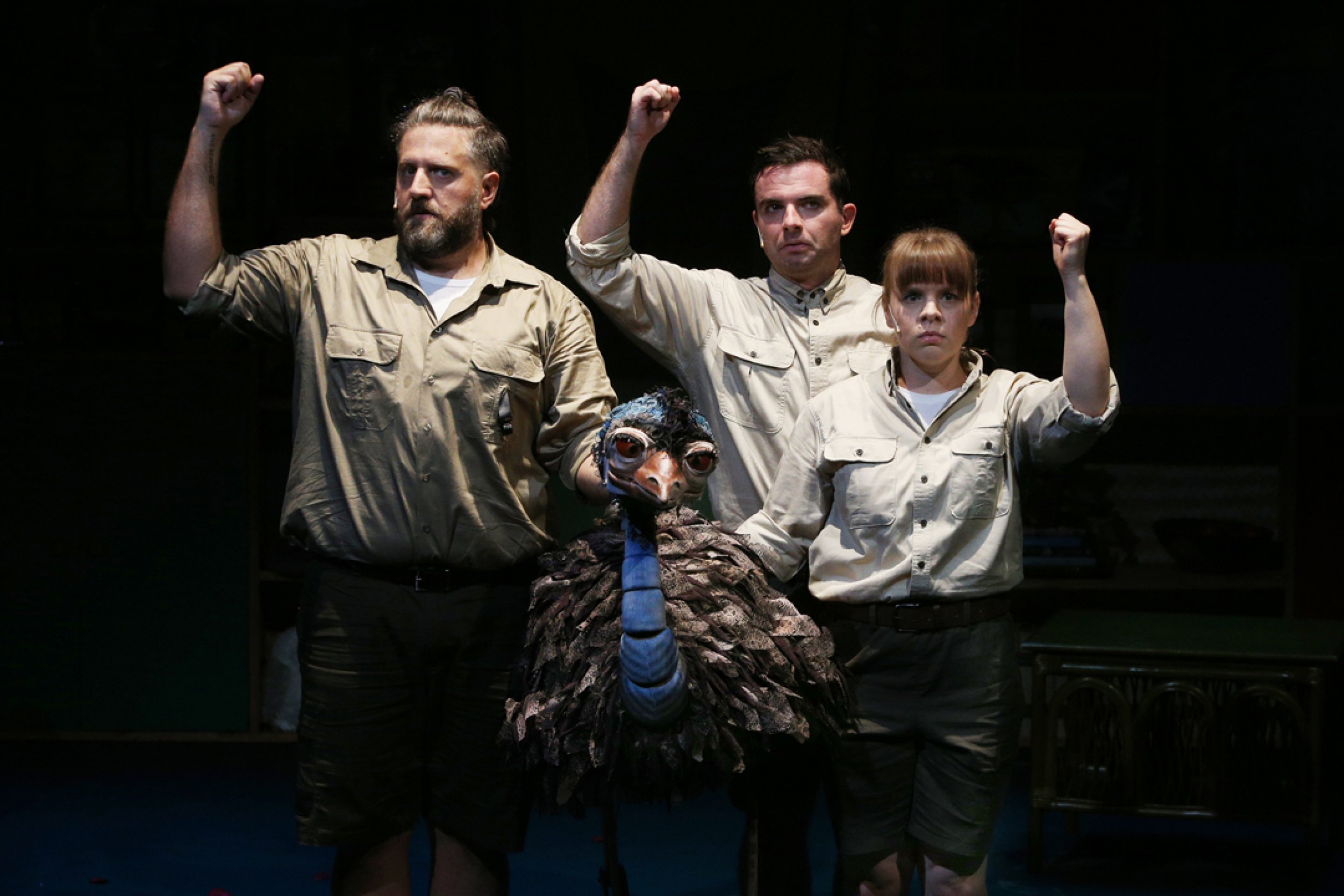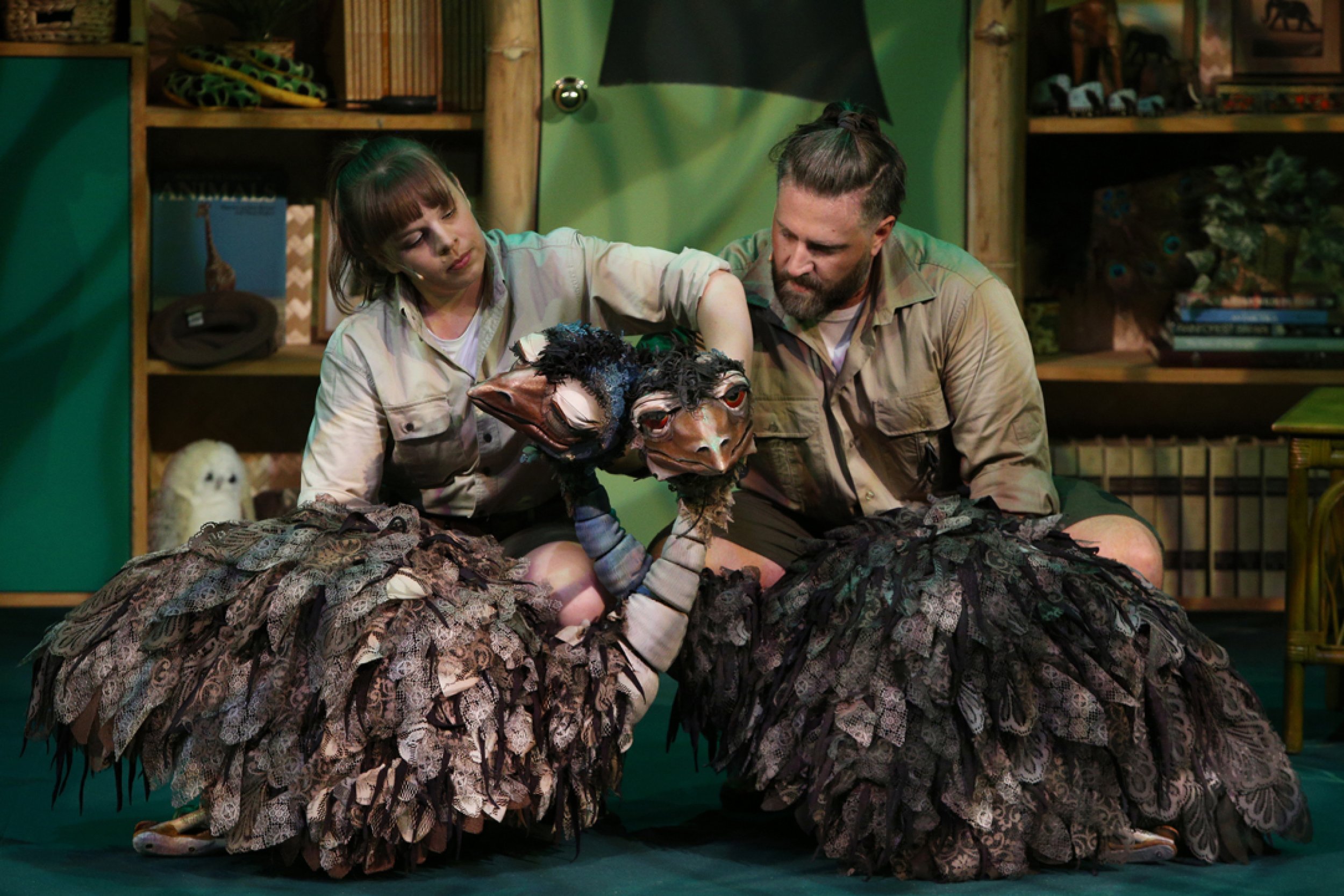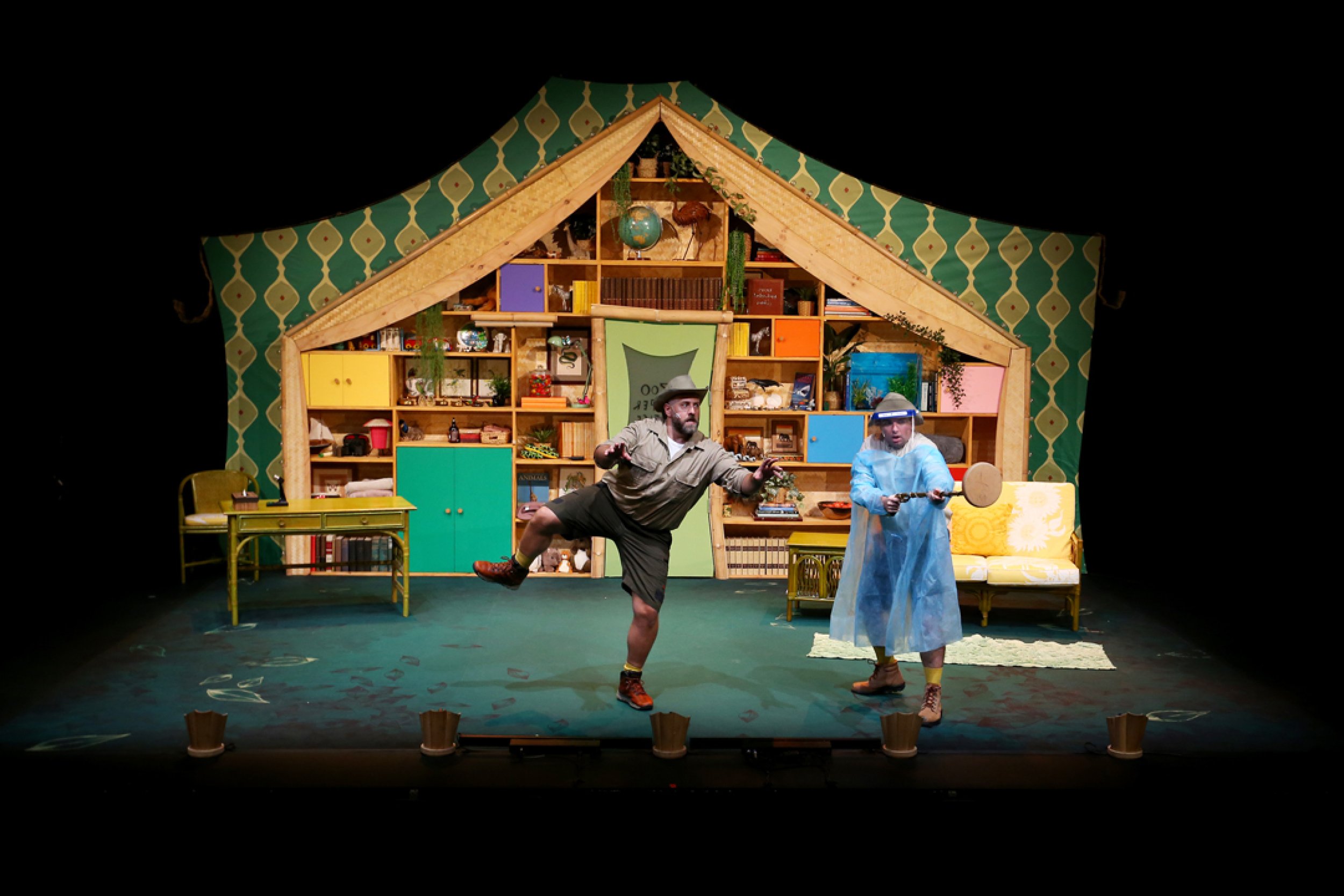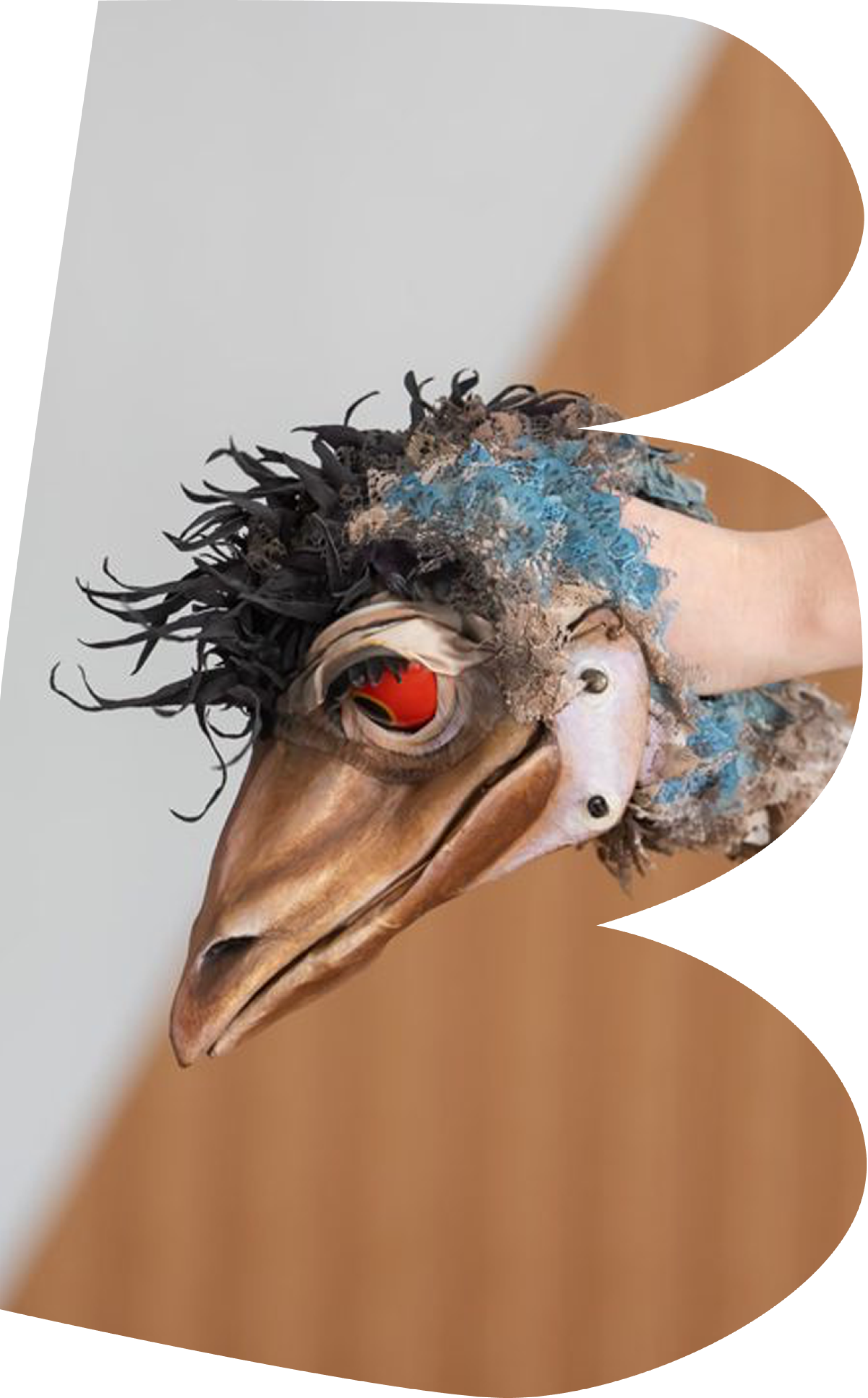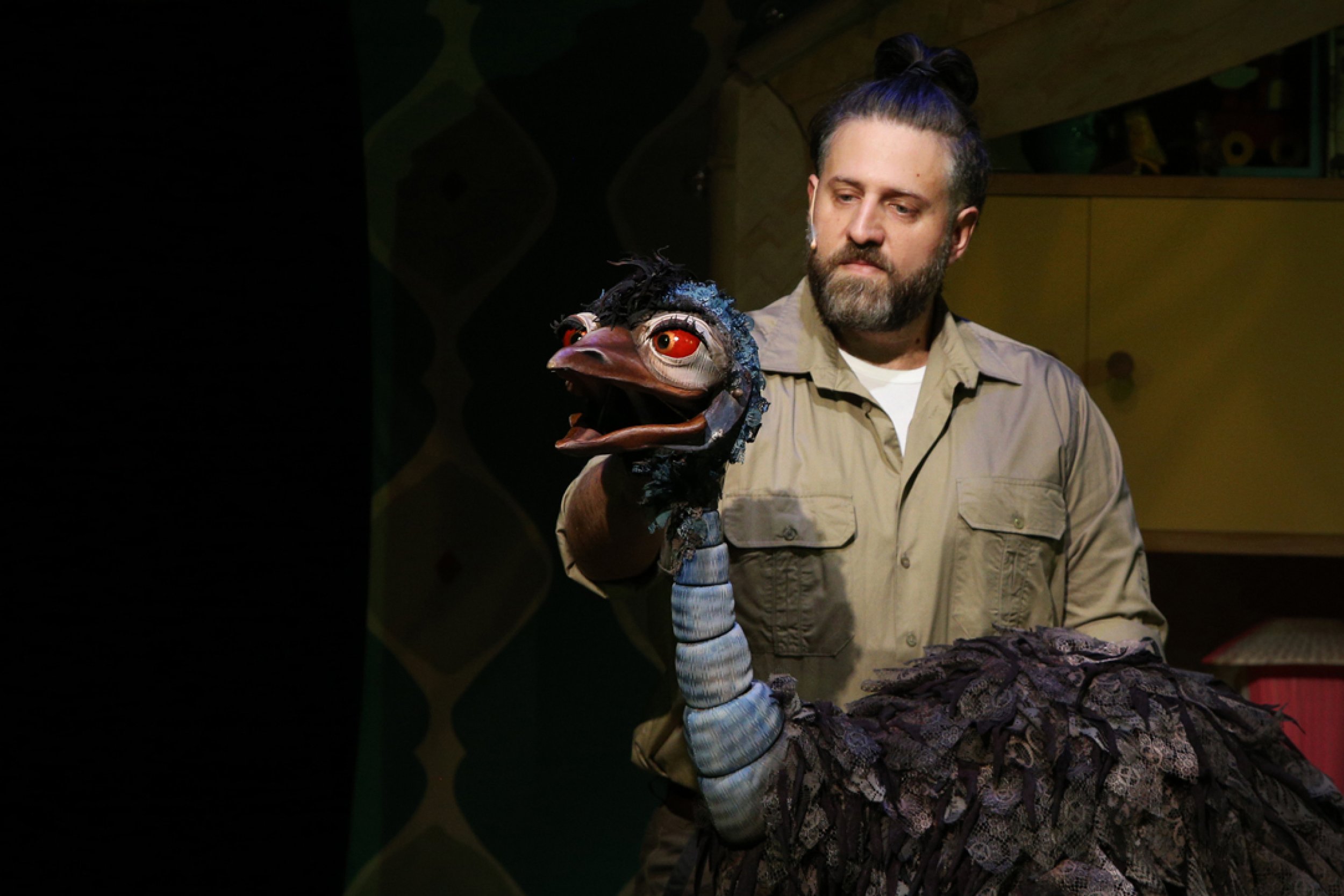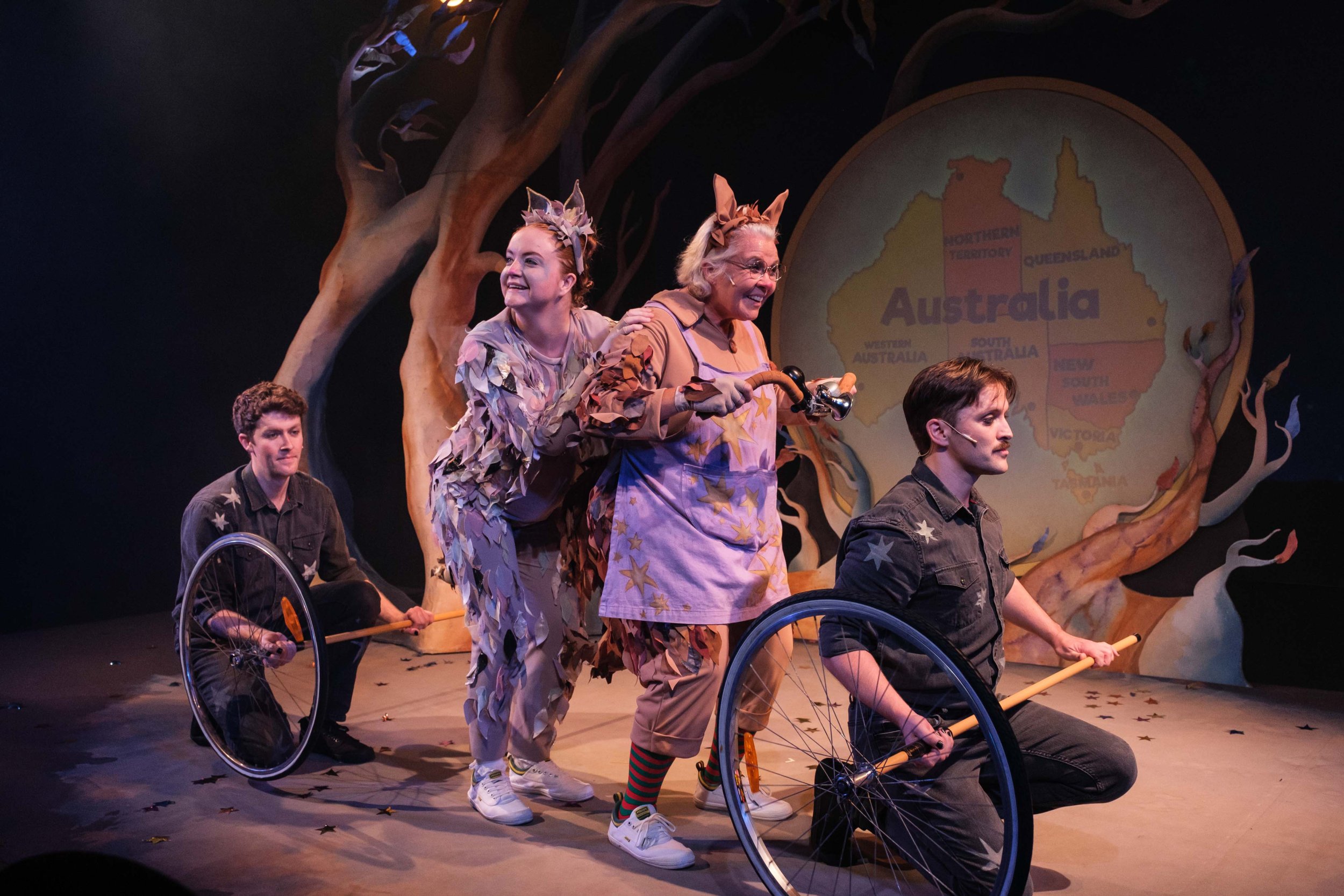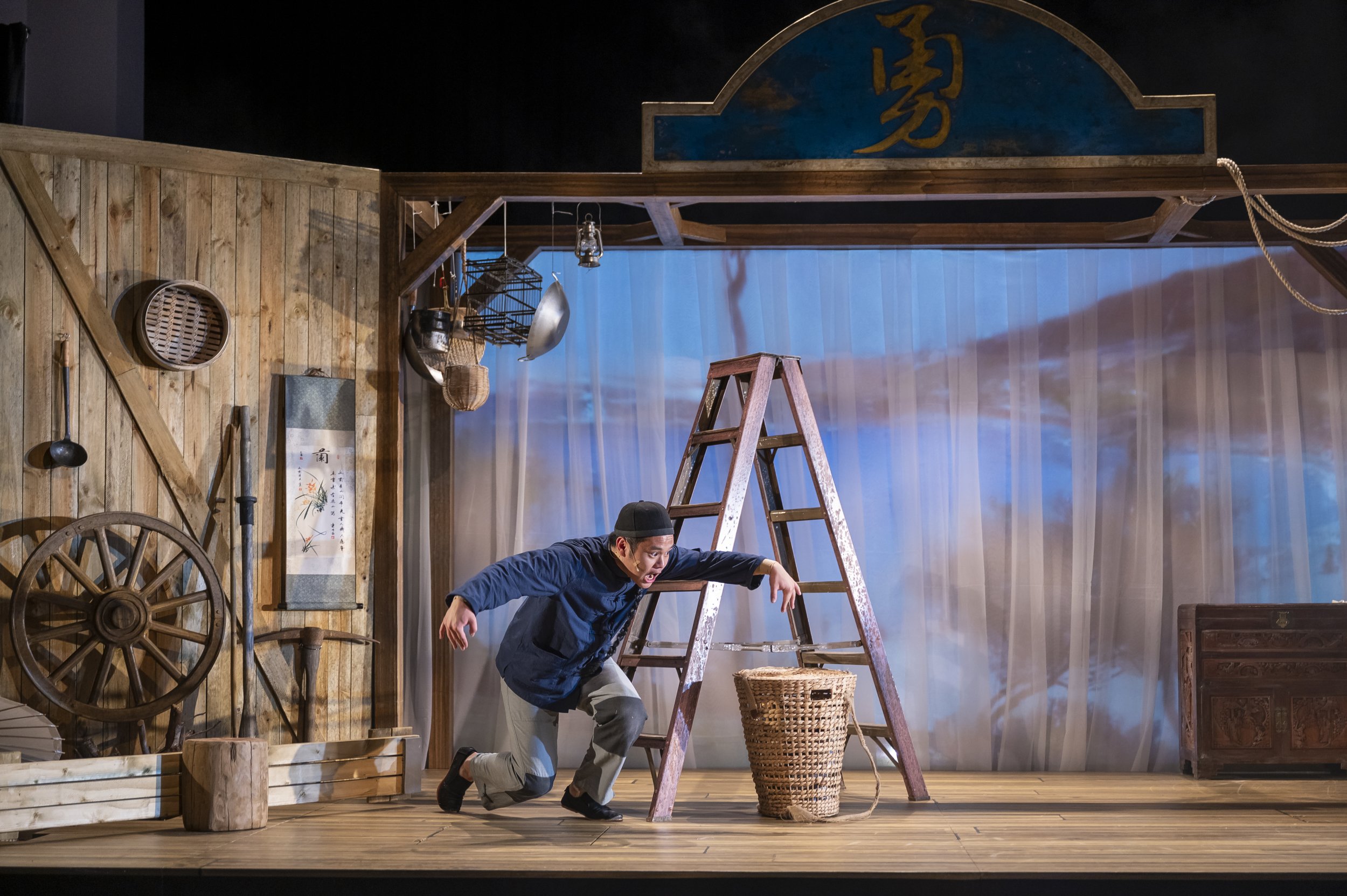What materials are the puppets made out of and where were the materials sourced?
The puppet frames were made from bamboo grown on my property in Pappinbarra, a rural region in the hills of NSW. I planted the bamboo 12 years ago and it is now big enough to harvest sustainably and use for projects. The bamboo is lashed together and the joints are paper mache for strength.
The heads were shaped from Paulownia wood, a tree from China that was planted in Pappinbarra years ago as a cash crop and has since become a weed problem.
The rest of the materials were sourced from local op shops and offcuts: the feathers are made from old lace curtains. The only things purchased new were the glue, paints and hardware.
How long did it take you to make the emu puppets and where were they made?
The puppets took quite a few months to make! About 180 hours each! They were made in the One Off Makery workshop which is a shed in the bush, run entirely on solar power and rainwater.
How are the puppets designed to move?
The puppets are designed based on an actual skeleton of an emu so that their movement is natural.
I try to build puppets so that when the puppeteer is relaxed, the puppet is relaxed too. Ideally, the personality of the creature is built into it as well, because the puppeteer is busy enough as it is without having to think of every joint! So if it’s a bubbly, bouncy character, I try to give it body language by building it with a lot of spring and bounce in the mechanism.
The legs of the emus are sprung so that when you roll a trigger with your thumb, it causes one leg at a time to lift. The puppeteer can use gravity and momentum to make it walk forwards or backwards. The heads have three mechanisms in them: beaks opening, eyes moving, and eyelids closing. Since there’s only room for one hand in that small space, the puppeteer’s fingers are very busy.
How would you describe the role of a puppeteer?
A puppet maker’s first task is to understand the story that is being told, the characters and the history, the anatomy and biology behind them, and what they need to do to tell the story. Perhaps the puppet needs to fly, speak, or be able to pick up objects. Some character sketches and ideas come next, and talking with the director and designer to make it all fit together. Then comes the technical design, where you figure out how all the movements can be achieved and how the puppet and the puppeteer will work together comfortably. Next, the material choices: what will it be made of? How do the material choices fit the story, how much will they cost and where will they come from? Making a prototype of the tricky bits is very useful. After all that the building can start: the internal structure and the mechanisms, then the muscles, skin, hair, feathers or clothes, and lots of fiddly finishing like eyelids and fingernails, and finally paintwork.
Being a puppet maker is great because there are so many different layers to think about. There’s ergonomics, engineering, sculpture, painting, textiles and story-telling. There are always new things to learn or experiments to try.
